#about kushtia
Explore tagged Tumblr posts
Text
1 note
·
View note
Text
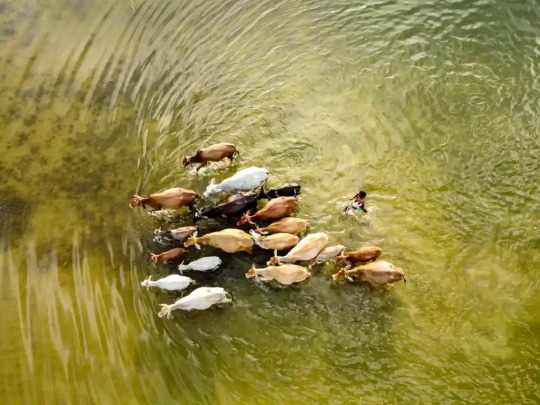
Youth title – Flood-affected area
A farmer and his cows are forced to wade through flood water to find food after the road became submerged in water during monsoon season in Kushtia, Bangladesh. Solayman Hossain, 18, won the youth title for his image taken in a village close to his own. He said: ‘I hope my photo will inspire environmental action by showcasing the importance of nature, raising awareness about environmental issues, and encouraging others to take positive steps towards sustainability’
Photograph: Solayman Hossain/EPOTY23 / Courtesy the Guardian Newspaper #nature #environment #photography #raisingawareness
2 notes
·
View notes
Text
Tastiest Bangladeshi Street Food!! Kalai Roti Making + Eggplant Vorta! | Kushtia, Bangladesh
Well, well, well! Hold on to your taste buds, folks, because we are about to take an epic journey into the land of mouthwatering flavors and tantalizing aromas. Brace yourselves for the tastiest adventure you’ve ever embarked upon – exploring the vibrant street food scene of Kushtia, Bangladesh! In this delightful YouTube video titled “Tastiest Bangladeshi Street Food!! Kalai Roti Making +…
View On WordPress
0 notes
Photo

This is Ilias Sami (In Bengali: ইলিয়াস সামি; Birthday: 29th October 2002, in Kushtia Sadar, Bangladesh), a Professional Digital Marketer and SEO Expert from Bangladesh. I am 19 years old in 2022. Studying at Dhaka Polytechnic Institute in Computer Science and Technology Subject. I am the Owner of Mukto Kosh, Home Clean Care and I am Kitchen. And now, I am working with a new Project, The New Moly Electronics. It is an E-Commerce Platform. The company currently shifting their marketing and sales online. The e-commerce platform was developed and SEO optimized by me. As well as we are starting our own SEO and Digital Marketing Agency and we are working on that too. Also, I am working as an SEO Consultant and Technical SEO Expert with Brandylane. Also, I am a full-time Search Engine Optimization Team Leader at Aladaboi.com. Working with alglimited.com and miracle.com as a Part-time SEO Content Writer. Previously, I have completed courses on SEO, Content Writing and Content Marketing, Affiliate Marketing, WordPress Customizations and Social Media Marketing from Reputed Organizations. To brush up on the skills I have worked on fiverr.com and legiit.com. After all that, Now I have been on this Online Social Media Platform to get introduced to many other professionals out there. What are they doing and how they are doing those same works with their professionality. To come up with New Ideas and Opportunities, I think this is the right place. My Achievements: I am Ilias Sami, a Certified SEO Expert and Digital Marketer from Bangladesh. I have more than 3 years experience with Blogs, Ads. and Writing. The achievements that I got from my skills are: I've Audited More Than 200+ Websites | Written 1,00,000 Words of SEO Optimized Content | Ranked More Than 10 Companies | Worked With More Than 5 E-Commerce Companies | and Solved 9+ WordPress Website's Technical Issues Talks about #seoservices, #dropshipping, #contentwriting, #marketingagency, and #digitalamarketing So, therefore, I want to get Connected with those who are Highly Professional in this Sector and also want to connect with them who want to grow their businesses online. m.me/iliassami.seo legiit.com/ilias (at United States) https://www.instagram.com/p/Cn4CHX-yMZ8/?igshid=NGJjMDIxMWI=
0 notes
Photo
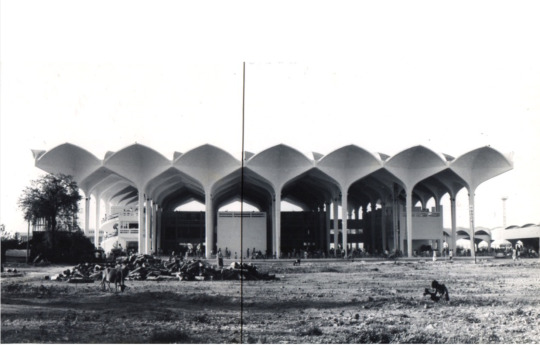
Kamalapur Railway Station in Dhaka
Architectural Optimism of Bangladesh
Saša Šimpraga, 2021.
Adnan Zillur Morshed is an architect and architectural historian with focus on history and theory of modern architecture and urbanism; global history; urban poverty and spatiality; water and architectural historiography; and ecological urbanism in developing countries. He received his Ph.D. and Master’s in architecture from MIT and completed his pre-doctoral studies at the Center for Advanced Study in the Visual Arts at the National Gallery of Art and postdoctoral under Verville Fellowship at the National Air and Space Museum in Washington, DC.
Morshed is the author of several books among other: Impossible Heights: Skyscrapers, Flight, and the Master Builder which examines the American fascination with the skyscraper and the airplane as part of a widely shared cultural phenomenon--the aesthetics of ascension--that characterized the interwar period. His books also include DAC, Dhaka through Twenty-Five Buildings.
He is a professor at the School of Architecture and Planning of the Catholic University of America in Washington, D.C.
Adnan Morshed is also involved with local and international intiatives on preservation of modernist architectural heritage of Bangladesh. We talk to him on the occasion of current international appeal to save the Kamalapur Railway Station in Dhaka from demolition.
SŠ: A gem of the Modern Movement in South Asia, The Kamalapur Railway Station in Dhaka, designed by Daniel Dunham and Robert Boughey in the 1960s is threatened due to the an urban expansion plan of the Dhaka Metro Rail's Line that includes its demolition and replacement by a new infrastructure, rather than its adaptation. What is the significance of the building and its current status?
Adnan Morshed: Kamalapur Railway Station is a rare modern train station in South Asia. It adopts an aesthetic vocabulary of tropical modernism for a public building in ways that have not been seen before in the region. The station’s modernist architecture breaks with colonial precedents both in the imperial center and on the subcontinent. In London, St. Pancras Station (1863–76) encapsulated modern values of mobility and exchange, while the Chhatrapati Shivaji Terminus (formerly Victoria Terminus; built in 1888 and now a UNESCO World Heritage) in Mumbai and Howrah Station (1906) in Kolkata functioned as symbols of imperial hegemony.
The histories of colonialism and train infrastructure are deeply intertwined in South Asia. In 1862, the Eastern Bengal Railway Company opened the first railway line in the region from which it took its name. Connecting Kolkata with the western Bangladeshi town of Kushtia, this expansion of train services signaled a new phase in the growth of East Bengal’s colonial economy. Due to geographical challenges posed by Bengal's deltaic terrain, the railway did not arrive in Dhaka until the following century, after the city’s economic profile had risen and it was subsequently made, in 1947, the provincial capital of then-East Pakistan. In 1958, the government approved the creation of a new railway depot, which was inaugurated a decade later as Kamalapur Railway Station. Not only was it one of the largest modern railway stations in South Asia, but it also embodied changing conceptions of modernity, from the bracing mobility of 19th-century railways to the soaring modernism that defined the 1960s.
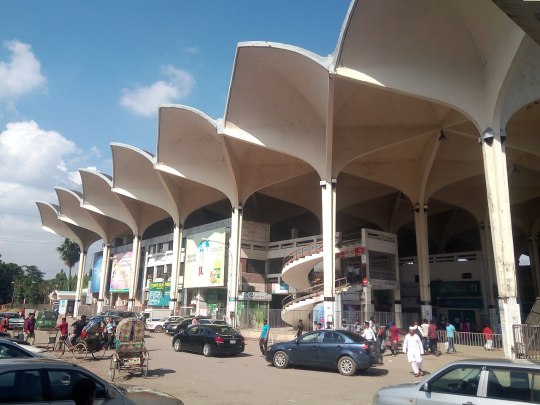
Kamalapur Railway Station, Photo by Anik Sarker/ Wikipedia
SŠ: Also in danger of demolition is the Dhaka University Teacher-Student Center Building by Greek architect Constantinos Doxiadis (the mastermind behind planning the city of Islamabad) from early 1960s. The structure exemplifies a modernist architectural sensitivity toward spatial needs for tropical climatic conditions. TSC's dome-shaped structure with empty spaces around is considered an iconic landmark not only inside Dhaka Uiversity campus, but in the broader cityscape of Dhaka. How optimistic are you about its future? And what is the general status of modernist architectural heritage of Bangladesh?
Adnan Morshed: I am concerned about the mid-20th-century buildings in Bangladesh because of the ways the notion of development is taking precedence over environment, history, and, generally, human wellbeing. Many buildings are about to face the wrecking ball. These buildings include the Teacher-Student Center or TSC. Located at the historic heart of the University of Dhaka, TSC exemplifies a type of tropical modernism that blends local architectural traditions of space-making—particularly the indoor-outdoor continuum and generation of space around courtyards—with the abstract idiom of the International Style. The complex of buildings was designed by the Greek architect, planner, and theoretician Constantinos Apostolos Doxiadis (1913–1975) in the early 1960s. This was a turbulent time marked by conflicting currents of political tension and architectural optimism in what was then East Pakistan, now Bangladesh. On the one hand, the two wings of postcolonial Pakistan were at loggerheads because of the political domination of East Pakistan by the military junta based in West Pakistan. On the other hand, many architectural opportunities arose in East Pakistan, which benefitted from American technical assistance. The United States allied with Pakistan as part of its Cold War-era foreign policy to create a geostrategic buffer against the socialist milieu of the Soviet Union–India axis in South Asia. Under the purview of a technical assistance program, the United States Agency for International Development and the Ford Foundation provided support for building educational and civic institutions in East Pakistan. Since there was a dearth of experienced architects in East Pakistan, the government sought the services of American and European architects for a host of buildings that were constructed during the 1960s. Doxiadis was among them.
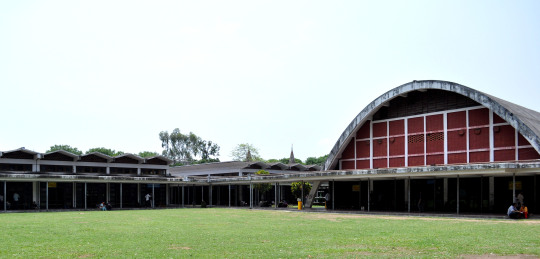
TSC, Photo by Fasiha Binte Zaman/ Wikipedia
TSC is also a demonstration of Doxiadis’s idea of ekistics, by which he meant an objective, comprehensive, and integrative approach to all principles and theories of human settlements. Criticizing the top-down planning model which he viewed as a central problem associated with modernism, Doxiadis employed the notion of ekistics to promote a multidisciplinary, inclusive, and bottom-up approach. He hoped that such a method would create a synergy of local and global influences, by which one could successfully meld a data-driven theorization of planning, universal values of harmonious living, and place-based cultural inflections.
In this vein, Doxiadis aligned the TSC’s ensemble of buildings on an east-west axis, to take advantage of the prevailing breeze from the south or north. The three-story Student Union Building features a “double roof” that minimizes heat gain by allowing cool breezes to pass in between the two canopies. The ingenious solution proved to be a trendsetting feature, but it was just one of the complex’s many innovations. Doxiadis covered the auditorium with a reinforced concrete parabolic vault, a pioneering construction technique that had yet to be tested in the country. Covered walkways, supported on steel columns, weave together the major buildings and green spaces, serving as the social spine of the entire complex. In the post-Independence period, TSC became the epicenter of political agitation within Bangladesh, serving as a backdrop to political demonstrations.
SŠ: Pioneer od modernist architecture in Bangladesh, Muzharul Islam, began hes career in the 1950s. Born in 1923, he went to study architecture in the United States, and then returned to Bangladesh. Along with his teacher Louis Kahn, he also brought Paul Rudolph and Stanley Tigerman to work in Bangladesh, and three of them came to be known as the American Trio. Apart from the Trio, it was Islam's style that dominated Bangladesh architecture from 1950s onwards. What is his legacy in architectural history of Dhaka?
Adnan Morshed: Not only was architect Muzharul Islam Bangladesh's pioneering modernist architect, he was also an activist designer who viewed architecture as an effective medium for social transformation. His early work shows how architecture was deeply embedded in post-Partition politics.
Consider his “master piece,” the Faculty of Fine Arts (1953-56) at Shahbagh in Dhaka. At first encounter, the building presents the image of an international-style building, with a quiet and dignified attention to the architectural demands of tropical Bengal. Closer inspection, however, hinders the Eurocentric tendency to measure the building's “modernity” exclusively through a “Western” lens. A host of nuanced architectural modulations and environmental adaptations reveals how Muzharul Islam's work cross-pollinates a humanising, modernist architectural language with conscious considerations of climatic needs and local building materials.
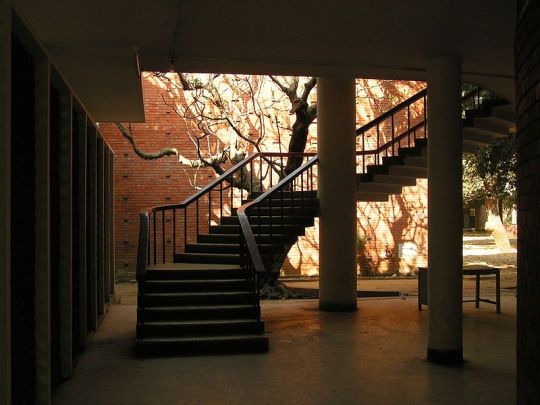
Faculty of Fine Arts, Photo by Rossi101/ Wikipedia
The literature on South Asian modern architecture usually identifies the Faculty of Fine Arts as the harbinger of a Bengali modernism, synthesising a modern architectural vocabulary with climate-responsive and site-conscious design programmes. What has not been examined in this iconic building is how Islam's work also provides a window into the ways his architectural experiments with modernist aesthetics were part of his inquiries into the ongoing politics of Bengali nationalist activism.
Muzharul Islam interpreted the prevailing political conditions in his homeland as a fateful conflict between the secular humanist ethos of Bengal and an alien Islamist identity imposed by the Urdu-speaking ruling class in West Pakistan. The turbulent politics in which he found himself influenced his worldview as well as his fledgling professional career. The young architect began his design career in a context of bitterly divided notions of national origin and destiny, and his architectural work would reflect this political debate. He felt the need to articulate his homeland's identity on ethno-cultural grounds, rather than on a supra-religious foundation, championed by West Pakistani power-wielders. Muzharul Islam's Faculty of Fine Arts embodied these beliefs.
With his iconoclastic building, Islam sought to achieve two distinctive goals. First, the building introduced the aesthetic tenets of modern architecture to East Pakistan. For many, its design signalled a radical break from the country's prevailing architectural language for civic buildings. These buildings were designed either in an architectural hybrid of Mughal and British colonial traditions, popularly known as Indo-Saracenic, or as utilitarian corridor-and-room building boxes, delivered by the provincial government's Department of Communications, Buildings, and Irrigation (CBI). The Faculty of Fine Arts was an unambiguous departure from the colonial-era Curzon Hall (1904–1908) at the Dhaka University, within walking distance of Islam's building, and the Holy Family Hospital (1953; now Holy Family Red Crescent Medical College Hospital).

Faculty of Fine Arts, Photo: Wikipedia
Second, the Faculty of Fine Arts' modernist minimalism—rejecting all ornamental references to Mughal and Indo-Saracenic architecture—was a conscious critique of the politicised version of Islam that had become a state apparatus for fashioning a particular religion-based image of postcolonial Pakistan. By abstracting his design through a modernist visual expression, Muzharul Islam sought to purge architecture of what he viewed as the political associations of instrumental religion.
SŠ: Internationally, perhaps the most known modernist structure in Bangladesh is the National Parliament Complex, designed by Louis Kahn and associates. Its construction began in 1964, in what is now known as the Decade of Development for Bangladesh and time when Dhaka was the second capital of Pakistan. When talking about architecture in general, Muzharul Islam stated that „practical aspects of architecture are measurable – such as, the practical requirements, climatic judgments, the advantages and limitations of the site etc. – but the humanistic aspects are not measurable.“ Those aspects come when the architect leaves and building starts its life. How did that highly acclaimed complex came to be a part of the national identity and how its architecture influences culture in a broader sence?
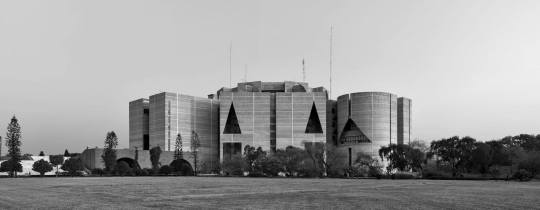
National Parliament Complex in Dhaka, Photo: Yes, Louis Kahn
Adnan Morshed: The American architect Louis Isadore Kahn's Parliament building in Dhaka is considered one of the architectural icons of the twentieth century. Intriguingly, Kahn was not the first choice for the project. After two masters, Le Corbusier and Alvar Aalto, had turned down the invitation from the government of Pakistan, the megaproject went to the architect from Philadelphia. After multiple design iterations and many bureaucratic entanglements, the construction of the Parliament building began in October 1964, at Sher-e-Bangla Nagar.
Kahn first visited Dhaka in early March of 1963, after he had received the commission to plan the Parliament complex of East Pakistan. Five years earlier, the commander-in-chief of the Pakistani army, Mohammad Ayub Khan, took control of the government through a military coup and imposed martial law in October 1958. In 1960, the military man was “elected” to a five-year presidency. Pakistan's new constitution of 1962 called for a “democratic” election to be held in 1965. The decade of the 1960s was a politically tumultuous period in East Pakistan. Bengalis felt exploited and ignored by West Pakistan's military regime and, consequently, dreamed of independence from the doomed political geography of a nation with two units separated by over 1,000 miles. Aware of the political and economic disparity between the two halves of Pakistan and concerned about his own re-election bid, Ayub Khan's administration came up with a political strategy to mitigate the grievance of the Bengalis.

National Parliament Complex in Dhaka, Photo: Yes, Louis Kahn
The idea of a “second capital” for East Pakistan was born in this context. This showcase capital would, it was hoped, “bind East Pakistan more firmly to the nation by conducting the nation's business for half of each year.” The political drama that ensued from then on explains how the Parliament building, first conceived as a “bribe” for the Bengalis, gradually took on a whole new identity as a symbol of the people's struggle for self-rule. With rudimentary construction tools and bamboo scaffolding tied with crude jute ropes, approximately 2,000 lungi-clad construction workers erected a monumental government building. Slowly but steadily, they unwittingly portrayed the broader resilience of a nation revolting against economic and social injustice. If the Shahid Minar symbolised the language movement during the 1950s, the Parliament building portrayed the rise of the independence-minded Bengalis during the 1960s.
Kahn searched for inspirations from the Bengal delta, its rivers, green pastoral, expansive landscape, raised homesteads, and land-water geography. Soon after he had first arrived in Dhaka, he went on a boat ride on the Buriganga River and sketched scenes to understand life in this tropical land. He didn't have any problems in blending Bengali vernacular impressions with those of classical Greco-Roman and Egyptian architecture he had studied during the 1950s. As the war broke out in 1971, Kahn's field office in East Pakistan quickly closed and construction work discontinued. During the liberation war, an ironic story persisted that Pakistani pilots didn't bomb the building assuming that it was a ruin! That “ruin” eventually became an emblem of the country, adorning national currency, stamps, rickshaw decorations, advertisements, official brochures, and so on. When it was more or less completed in 1983—more than a decade after East Pakistan (later Bangladesh) emerged as a new nation-state and 9 years after Kahn's unexpected death in New York City—the Parliament complex emblematised the political odyssey of a people to statehood.
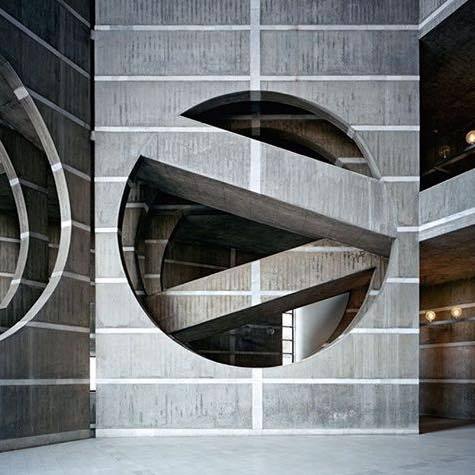
National Parliament Complex in Dhaka, Photo: Yes, Louis Kahn
Kahn searched for inspirations from the Bengal delta, its rivers, green pastoral, expansive landscape, raised homesteads, and land-water geography. Soon after he had first arrived in Dhaka, he went on a boat ride on the Buriganga River and sketched scenes to understand life in this tropical land. He didn't have any problems in blending Bengali vernacular impressions with those of classical Greco-Roman and Egyptian architecture he had studied during the 1950s. As the war broke out in 1971, Kahn's field office in East Pakistan quickly closed and construction work discontinued. During the liberation war, an ironic story persisted that Pakistani pilots didn't bomb the building assuming that it was a ruin! That “ruin” eventually became an emblem of the country, adorning national currency, stamps, rickshaw decorations, advertisements, official brochures, and so on. When it was more or less completed in 1983—more than a decade after East Pakistan (later Bangladesh) emerged as a new nation-state and 9 years after Kahn's unexpected death in New York City—the Parliament complex emblematised the political odyssey of a people to statehood.
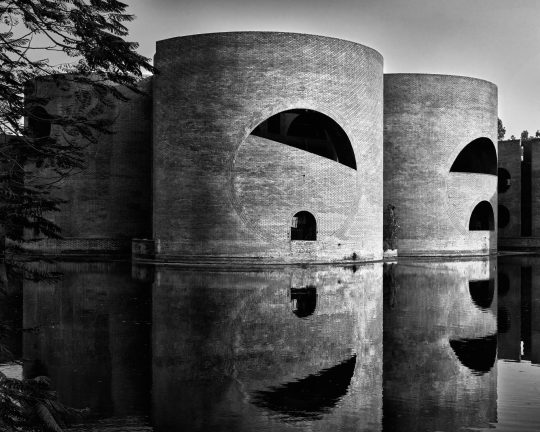
National Parliament Complex in Dhaka, Photo: Yes, Louis Kahn
SŠ: Transformation of Dhaka today is intensive. What would be some of the significant architectural achievements in contemporary Dhaka and Bangladesh?
Adnan Morshed: The architectural scene in Bangladesh has been thriving with a “new” energy over the past two decades or so. Bangladeshi architects have been experimenting with form, material, aesthetics, and, most importantly, the idea of how architecture relates to history, society, and the land. Their various experiments bring to the fore a collective feeling that something has been going on in this crowded South Asian country. One is not quite sure about what drives this restless energy! Is it the growing economy? The rise of a new middle class with deeper pockets? Is it an aesthetic expression of a society in transition? Is it aesthetics meeting the politics of development?
Whatever it is, an engaged observer may call this an open-ended search for some kind of “local” modernity. Bangladeshi architects have been winning architectural accolades from around the world for a variety of architectural projects. High-profile national architectural competitions have created a new type of design entrepreneurship, yielding intriguing edifices. Architects have also been expanding the notion of architectural practice by engaging with low-income communities and producing cost-effective shelters for the disenfranchised. Traditionally trained to design stand-alone buildings, architects seem increasingly concerned with the challenges of creating liveable cities.
No doubt it is an exciting time in Bangladesh, architecturally speaking, even if the roads in the country's big cities are paralysed by traffic congestion and a pervasive atmosphere of urban chaos. In the midst of infernal urbanisation across the country, an architectural culture has been taking roots with both promises and perils, introducing contentious debates about its origin, nature, and future.
Architecturally, the 1980s was an interesting time, as divergent ideas began to permeate architectural thinking in the country. Three stories should be mentioned. An “avant-garde” architectural study group named Chetona (meaning awareness) sought to introduce critical thinking as an essential part of architectural practice. Many architects, senior and junior— disillusioned with the prevalent role of architecture as primarily a professional practice without broader social visions and engagement with history and culture—gravitated toward Chetona, meeting at Muzharul Islam's architectural office, Bastukalabid, at Poribagh. The iconoclasm of the study group revolved around reading critical writings in architecture, criticism of current methods of architectural pedagogy, and reasoned questioning of architecture as a technical discipline. The group's reading list ranged from Rabindranath Tagore to the Franco-Swiss architect Le Corbusier to the Norwegian architectural theorist Christian Norberg-Schulz.
The influence of the Aga Khan Award for Architecture (AKAA), an architectural prize established by Aga Khan IV in 1977, was also felt strongly during the 1980s. The award sought to champion regional, place-based and culture-sensitive architectural impetuses in Islamic societies. Awardees included projects in contemporary design, social housing, community development, restoration, adaptive reuse, and landscape design. Architects were inspired to look for a “spirit of place.” Regionalism was in vogue.
The Aga Khan Award for Architecture's flagship magazine, Mimar: Architecture in Development, first published in 1981, influenced many Bangladeshi architects and architecture students in thinking beyond western modernism and the aesthetic conventions it allegedly created. At its inception, Mimar was the sole international architecture magazine focusing on architecture in the developing world. In many ways, the magazine's celebration of “local” expanded the scope of architectural practice in the country and gave rise to new aspirations among architects, who were willing to search for organic roots in architecture.
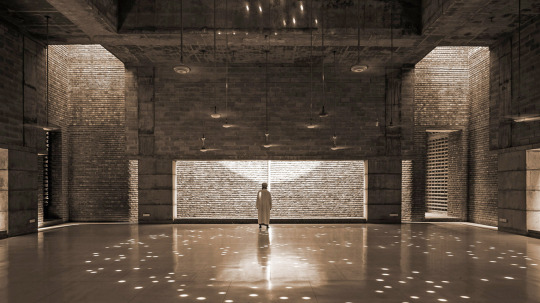
Bait Ur Rouf Mosque in Dhaka by Marina Tabassum, 2016 Aga Khan Award Recipient
The new architectural aspirations coincided with the rapid urbanisation of Bangladesh and the rise of an urban middle class that spawned a flourishing culture of architectural patronage. A historically agrarian country, Bangladesh began to urbanise rapidly from the late 1980s. The country's total urban population rose from a modest 7.7 percent in 1970 to 31.1 percent in 2010. Impoverished rural migrants began to flock to major cities, particularly the capital, Dhaka, in search of employment and better lives. Its population skyrocketed from 1.8 million in 1974 to more than 6 million in 1991 and to nearly 18 million today. The capital city's massive population boom created an unsustainable demand on urban land, and in return, land values increased.
During this transitional period, real estate developers emerged as powerful economic actors in Dhaka and beyond, playing a key role in replacing traditional single-family houses with multi-story apartment complexes. Meanwhile, public-sector housing failed to meet the demand, and in this vacuum, private real estate companies flourished rapidly. As private developers became key actors in the city's housing market, a trade association was needed to regulate the real estate sector and to ensure fair competition among its members. The stratospheric rise of private real-estate developers suggested that there was a robust market for high-density, multifamily apartments, even though affordability remained a major hurdle. Many architects experimented with material, form, spatial organisation, construction, aesthetic expression, and the individual plot's urban relationship to the neighbourhood.
A burgeoning class of urban entrepreneurs—who made their fortunes in the country's export-oriented ready-made garments industry, manufacturing and transportation sectors, construction industry, and consumer market—emerged as a new generation of architectural patrons, investing hefty amounts of money to build their signature single-family houses and other projects, including apartment complexes, hospitals, shopping malls, private schools and universities, factories, spaces of worship, etc.
And, happily, architects began to find work abundantly from the mid-1990s. Design consultancy until the early 1990s was limited to a handful of architectural firms. But soon thereafter new, smaller firms, run by younger architects, began to reshape the traditional methods of architectural design practice in the country.
The liberalisation of the market, the emergence of a strong private sector, and rapid urbanisation resulted in the need for a range of building typologies and related architectural design services. In the public sector, government organisations began to evaluate the social and commercial value of aesthetic expression and hired architectural firms to compete in the building market. All of these developments ushered in a vibrant and dynamic opportunity for architectural experiments. The last two decades in Bangladesh witnessed an intense battle of architectural ideas. The earlier attitudes to orthodox modernism or regionalism in architecture dispersed into a more nuanced landscape of aesthetic abstraction.
SŠ: „For most of modern history, cities grew out of wealth. Even in more recently developed countries, such as China and Korea, the flight towards cities has largely been in line with income growth. But recent decades have brought a global trend for “poor-country urbanisation”, in the words of Harvard University economist Edward Glaeser, with the proliferation of low-income megacities.“ Dhaka is an example of such a city that has outpaced develepoment and has grown tremendously. Can planned urbanisation even tackle such a huge task in given circumstaces?
Adnan Morshed: While architecture rose and prospered as individual plot-based or stand-alone practices, cities—Dhaka as a glaring example—as a whole descended into unbearable chaos. In extreme cases, Taj Mahals coexisted with overflowing dumpsters. Private oases and sumptuous cafes overlooked the ghettoised world of slums. While architects searched for Bengali roots and global gravitas in their work, they mostly failed to promote an “ethical” view of how city should function and treat all its citizens.

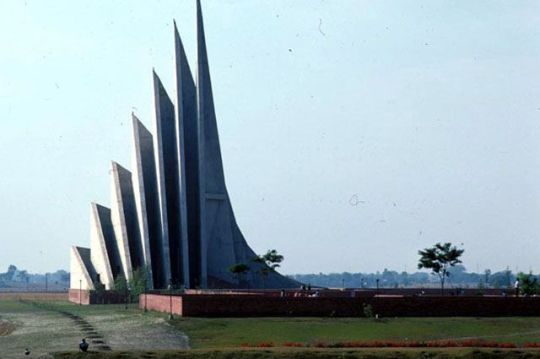
While globalisation went on with a cutthroat consumerist and neoliberal agenda, and architecture patronage benefitting from it, social inequality grew manifold. Architects seemed confused as to how architecture could or should also play mitigating roles in addressing the issues of social justice. Slums burned and architects rushed to the site with naïve, superficial aesthetic solutions without trying to understand the exploitative economic and political systems that blight society in the first place. The feeling that “architecture is great but the city rots” sometimes seems overwhelming.
Walking in some of Dhaka's walkable streets fronted with exclusive-looking buildings, an observer might wonder how architecture could showcase the rising stature of a developing country, while failing to play a role in making it socially just.
_
In Croatian: https://vizkultura.hr/intervju-adnan-morshed/
_
Projekt Motel Trogir u 2021. godini podržan je od Ministarstva kulture i medija Republike Hrvatske i Zaklade Kultura nova.


10 notes
·
View notes
Photo

Cocktails juice with jelly sauce ! @faysal.coffeeart Facebook link https://www.facebook.com/faysalcoffeeART/ YouTube link https://youtube.com/channel/UC6PSgFDizuh7dYjNLOfvlkA !! Our channel only for about coffee art and learning how to make coffee and get how to be a professional barista.We work hard to make videos just to entertain you.if u are new pls flow up our Instagram and subscribe our YouTube channel !! Faysal coffee ART !! Like, comment and share.#baristatraining #bahrain #bahrainnationalday #bahraininstagram #bangladesh #india #oman #instagram #facebook #tiktok #artistsoninstagram #latte #usahawancuckoo #turky #uk #dubai #kushtia #baristaskills #foodphotography #eat #lovequotes #youtube #youtuber #youtubers #fans #salmankhan #star #baristaart#bahrainfoodies #bahrainfashion https://www.instagram.com/p/CNYjrmJLYw0/?igshid=hb7yc0zgwxz5
#baristatraining#bahrain#bahrainnationalday#bahraininstagram#bangladesh#india#oman#instagram#facebook#tiktok#artistsoninstagram#latte#usahawancuckoo#turky#uk#dubai#kushtia#baristaskills#foodphotography#eat#lovequotes#youtube#youtuber#youtubers#fans#salmankhan#star#baristaart#bahrainfoodies#bahrainfashion
11 notes
·
View notes
Text
Project 15
Apprenticeship Program Name: Radio Campbuzz Project Name: RJ for Rangdhonu and script writer for shows Program Date: Fall 2017 – Fall 2018 Program Description: I joined this program when Kashfia Ma’am was the advisor for the program. She assigned me to a RJ position for a weekly show called, “Rangdhonu”. And I had to write the script for the show as well. What I had to do was be a host for the show and the show is about pop culture and entertainment. So we had to talk about any new update on Hollywood and Bollywood. Program Justification: What the show provided was to let the students know about any pop culture and to let them enjoy some entertainment before going back to class. There were other shows but this show made me realize how fun it is to be a RJ. Due to this show, I was even awarded the best RJ in Radio Campbuzz of Spring 2018. Program Name: Rangdhonu. Program Time: Every Wednesday from 12 pm to 1 pm.
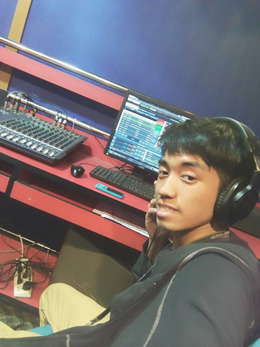
Picture 1: This is me before the show of Rangdhonu at the station.

Picture 2: This is the poster that declared that Nabeela apu and I were the host of the show, Rangdhonu, on social media.

Picture 3: This was the award and the certificate of me winning the best RJ.
Script for the 5th Rangdhonu show: Written by: Wangkhem Thonglen
Link 1
Sonam Kapoor ties the knot! Celebrity marriages are always the talk of the town, especially when it is the much-awaited wedding of one of Bollywood's most beloved stars, Sonam Kapoor. In an event of grand celebrations, Sonam Kapoor has finally tied the knot last Tuesday, May 8, with her long-time boyfriend Anand Ahuja. For those who don't know, Anand Ahuja is a businessman who has founded his own fashion brand named Bhane. His Delhi-based business has made him quite successful despite his young age, and fans know him well for always being addressed fondly in Sonam's online posts. The couple is active on social media, and has never failed to win hearts through their messages of adoration and love. Radio Cambuzz wishes the couple a happy conjugal life!
SaRa May 12 marked the grand opening of SaRa's first showroom in Mirpur. The fashion house made a huge statement with endorsements from stars like Sara Zaker, Oyshee, Shahtaj, Pritom, Xefer, Azim, Doyel and many others. They were present during the opening, along with the owner S.M Khaled.
RABINDRA FESTIVALS AROUND THE COUNTRY The celebration of 157th birth anniversary of Tagore in Shilpakala Academy, Dhaka. Artistes performed in a programme by Jayita Rabindra Sangeet Shomillon Porishod in Mymensingh. Artistes did a cultural show in Rabindra Mela, Channel i premises, Dhaka. Artistes from Bangladesh and India performed in Rabindra Festival in Shelaidah Kuthibari, Kushtia. Also Sirajganj.
30 years of BAMBA - More than just bands After a break of almost four years, Bangladesh Musical Bands Association, better known as BAMBA, recently arranged a mega concert, 'BAMBA Live Chapter 1', in Dhaka. The turnout was huge, with the spacious hall room of the International Convention Centre, Bashundhara, filled to the brim with fans eager to get a glimpse of their favorite bands and listen to their all-time hits. 11 of the 27 bands under the umbrella of BAMBA, including Warfaze, Miles, Shunno, Aurthohin, Nemesis, Vikings, Feedback, Dalchhut, Maq O' Dhaka, Pentagon and Arbovirus performed at the concert. Star Showbiz recently invited BAMBA to participate at a roundtable discussion at The Daily Star Centre. Hamin Ahmed, President of BAMBA; Sheikh Monirul Alam Tipu, General Secretary; Fuad Naser Babu, Vice President; Maqsoodul Haque (Mac), Executive Committee Member; Mohammad Ali Shumon, Treasurer; and Doza Alan, CEO, SkyTracker Limited, took part in the roundtable discussion. It was facilitated by Star Showbiz Editor Rafi Hossain. The discussion focused on BAMBA's current activities and the way forward in the face of the challenges confronting our music industry.
Link 2
Zoe Saldana on the Hollywood Walk of Fame After smashing success as the alien warrior Gamora in the Guardians of the Galaxy films and more recently, Avengers: Infinity War, Zoe Saldana is on a path to eternal stardom, literally. She joins the likes of Marilyn Monroe, Charlie Chaplin and her co-actor Chris Pratt, by receiving her very own star in the Hollywood Walk of Fame. Zoe Saldana took to Instagram to express her gratitude, saying she is blessed and honored to be a part of the history of Hollywood. “May this open more doors for Latinx and all other under-represented community!” she further stated. Zoe Saldana has also appeared in James Cameron's 2009 film Avatar and the recent Star Trek trilogy. Being a constant presence in blockbuster sci-fi and fantasy films, Zoe Saldana is expected to become a top name in this specific genre quite soon. 2018 71st Cannes Film Festival From Tuesday May 8th til Saturday May 19th. Australian actress Cate Blanchett has been named as the President of the Jury. Asghar Farhadi's psychological thriller Everybody Knows, starring Javier Bardem, Penélope Cruz and Ricardo Darín, opened the festival and competes in the Main Competition section The Han Solo spinoff Solo: A Star Wars Story touched down Tuesday at the Cannes Film Festival, bringing its cast and a full-sized Chewbacca to the French Riviera extravaganza. Director Ron Howard, wearing a hat that read “A long time ago in a galaxy far, far away,” introduced his cast before the film’s international premiere at Cannes. Sonam Kapoor wows at the red carpet of Cannes Film Festival 2018. Bollywood superstar Aishwarya Rai Bachchan once again stole the show as she walked the prestigious red carpet at the Cannes Film Festival, this time in a stunning ultra-violet, blue and red gown that reflected the metamorphosis of a butterfly. History was made at this year's 71st Cannes Film Festival on Saturday as 82 women, representing the limited number of women filmmakers selected over its more than seven-decade history, made a symbolic walk up the red carpet. The stars, filmmakers and other professionals ascended the steps of the Palais des Festivals at the Cannes Film Festival, protesting for the solidarity of the women in the industry who are struggling for a voice, equal pay, as well as a safer work place. The five female members of this year's Cannes jury-- Cate Blanchett, Kristen Stewart, Ava DuVernay, Lea Seydoux and Burundian singer Khadja Nin, along with Jane Fonda, Salma Hayek and Marion Cotillard were among the group of women.
Link 3 Mim Mantasha Superstar in the making Winning the country's biggest pageant is not an ordinary feat. Mim Mantasha has won not just a crown, but also the hearts of millions. Awaiting a new journey, the Lux Channel i Superstar 2018 winner shares her story with The Daily Star. A final year student of Fine Arts at Jahangirnagar University, Mim has always been a creative and curious soul. She was an avid follower of the contest for a long time. This year, she finally took the decision to compete. Taking part in the competition was certainly not a cakewalk. “We went through vigorous training sessions. We did yoga in the mornings,” explains Mim. Before the task rounds, the contestants went through fifteen days of training for ramp walk, acting, dancing, and many other skills. The photo shoots, acting, and improvisation rounds were Mim's favourite tasks in the competition. “I was nervous but in a scene, I got to convince people through my acting that my child was lost. I enjoyed it,” Mim smiles, adding that the competition was an overall memorable experience. Although she is highly enthusiastic about working in the media, she wants to take more preparations before doing so. She is now Lux Bangladesh's brand ambassador and has also won the opportunity to work on television and feature film projects of Impress Telefilm. Before hitting the silver screen, Mim wants to explore the world of television. Being a painter at heart, Mim also wants to continue painting and have her own exhibition in the future. Further to this, she intends to work for children who need special care. “I am in a fortunate position and it is our duty to take care of those in need.” says Mim. With great intentions, we hope Mim Mantasha excels at every step of her future endevours.
Link 4
Avengers Infinity War Review The plot itself is pretty simple. There are six stones that possess mystic powers and he/she who possesses all the stones is by default the most powerful being in the universe. Our Marvel superheroes must forget their own conflicts and join forces against Thanos to restore the fate of the universe and its inhabitants. Of course, watch the movie to know how things pan out. Avengers: Infinity War is the movie of movies, and let me tell you why. Most, if not all, the characters of the MCU are present in this film and bring their own flavour into the mix. Thor is mourning the loss of his home and hammer, Stark feels he needs to take a break from saving the world, Captain America is still out to bring justice the right way, and Hulk has no control over himself. I don't know what formula the Russo brothers have applied in their direction but I watched in awe how all the characters blended to deliver multiple storylines within a movie. Yes, I have also compared this movie to a mega three-hour episode of your daily soap opera. Avengers: Infinity War is the comprehensive Marvel movie; it is the beginning of an end. It lifts you, it hits you, and leaves you with a cliffhanger extraordinaire. See it to believe it and it'll still be unbelievable. By next weekend, Infinity War will top $1.78 billion and could sit around $1.8 billion, ensuring Marvel's year-to-date tally exceeds $3.1 billion by next Sunday.
Deadpool 2 Marketing Right off the bat, you see how Deadpool has scratched out the 20th Century Fox logo and put “TBD,” which is a sly allusion to the ongoing Disney/Fox (and Comcast?) merger drama. The content of the letter is exactly what you might expect from the Merc with a Mouth. Pop culture references, silly puns, bad language, and Ryan Reynolds bashing. Then, at the bottom, instead of the #ThanosDemandsYourSilence, we get #WadeWilsonDemandsYourSisterSorryStupidAutoCorrectSilence. See, you guys, it’s funny! And not at all trying too hard. Kidding aside, the marketing for “Deadpool 2” has been pretty top notch, but perhaps not as great as the first film. Recently, the film premiered a music video for the soundtrack featuring Celine Dion singing an over-the-top ballad while a high-heel-wearing Deadpool does an interpretive dance around the diva. It’s ridiculous and fun. And also, the most recent trailer seems to have struck a chord with fans, who are coming down off their ‘Infinity War��� high.
Link 5
Top 10 Hollywood Box Office Weekend 1. Avengers: Infinity War - $62,078,047 (Total Grossing – $548,090,150) 2. Life of the Party - $17,886,075 (New) 3. Breaking In - $17,630,285 (New) 4. Overboard - $9,864,415 5. A Quiet Place - $6,455,396 (Total Grossing - $169,608,030) 6. I Feel Pretty - $3,805,437 7. Rampage - $3,462,442 (Total Grossing - $89,827,105) 8. Tully - $2,248,945 9. Black Panther - $2,077,207 (Total Grossing - $696,331,818) 10. RBG - $1,188,186
Billboard’s top 10 Hits 1. This Is America – Childish Gambino (New) 2. Nice For What – Drake (Last Week: 1) 3. God’s Plan – Drake 4. Psycho – Post Malone Featuring Ty Dolla $ign (Last Week: 2) 5. Meant To Be – Bebe Rexha & Florida Georgia Line 6. The Middle – Zedd, Maren Morris & Grey 7. Look Alive – BlocBoy JB Featuring Drake 8. Never Be The Same – Camila Cabello 9. Perfect – Ed Sheeran (Last Week: 12) 10. No Tears Left To Cry – Ariana Grande Learning and reflections: This program made me realize the inner potential I had to be so extrovert and be a good host. I learned what to do or say after getting stuck during a live session. I have improved my speaking skills and the flow of a RJ host on how to talk and say because they have a different tone when it comes to a live session. I have taken all these skills from this program and I even got selected and did a short commercial video for Spice FM Radio. I also learned how to write a script for a radio show.
2 notes
·
View notes
Text
Beautiful Kushtia | Tourism or Parjatan Information of Kushtia
Kushtia
From this page, the tourist can be informed about the travel information of Kushtia district. Which will come in handy in their travels. Not only that, there is an informative video hyperlinked with the name of each travel destination through which the video will give a clear idea about the place and they will become interested in travel.
1 note
·
View note
Text
Nutrition Olympiad 2019-Nutrition Redefined
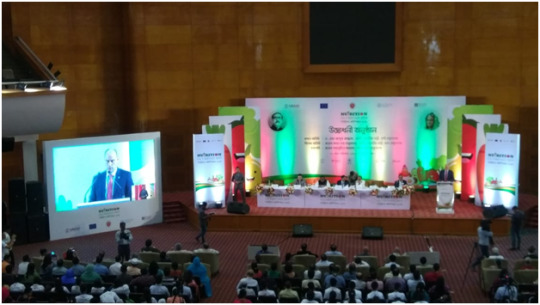
Nutrition Olympiad kicked off this year as an exciting extravaganza, which was boosted by the participation of the youth. It was held on Saturday, 27th April 2019 at the Bangabandhu International Conference Centre (BICC), Agargaon, Sher-E-Bangla Nagar, Dhaka, organized by the Meeting the Undernutrition Challenge (MUCH) project, implemented by the Food and Agriculture Organization of the United Nations (FAO) in collaboration with the Food Planning and Monitoring Unit (FPMU), Ministry of Food, and the BIID Foundation during Nutrition Week 2019. The event was financially supported by the United States Agency for International Development (USAID) and European Union (EU).The fundamental objective of the “Nutrition Olympiad 2019” was “To foster youth networks at national and regional levels to advocate for improvement of nutritional status for all and to find innovative ways to improve nutrition awareness and behavior especially among adolescents and youth.” BIID Foundation and the organizing team are willing to successfully initiate this act by this spectacular event.
The event that began sharp from 8am and proceeded upto 6pm was indeed a grand event attended by very significant figures who are associated with working towards a nutritious future. The main programme(inaugural ceremony, competitions and Nutrition Club stalls) was held inside the Hall of Fame at BIIC. It was splendidly decorated and the colourful stalls on each side added to the ambience. Registration of participants and visitors were done from 8am and the speeches began at around 9am. There were present government officials and representatives from international and national organizations, civil society, private sector, academia, and media,
The first speech was delivered by M BadrulArefin, Director General of FPMU, Ministry of food. In his speech, he stated that he was satisfied to be part of this wonderful event and went on to emphasize on the significance of nutrition in our lives. The next speech was by our very own Md. Shahid Uddin Akbar, Chairman and CEO of BIID foundation. He expressed his contentment in successfully conducting this huge programme contributing to nutrition which is an essential part of life and is the key to solving crucial diseases that’s circulating around. He also states about the contributions of this foundation and the incoming collaboration projects with other organizations. Moreover, he enunciated his wish to expand nutrition club. His speech was followed by Guest of Honour, Robert D. Simpson, representative of FAO in Bangladesh, who delivered the message of importance of nutrition and how “food brings us together” and addresses the issues of malnutrition globally. After that, Special Guests H.E. RensjeTeerink, Ambassador to the EU in Bangladesh and Sadhan Chandra Majumder, Hon’ble Minister of Ministry of Foodconveyed their speeches. Succeedingly, Chief Guest Dr. Md. AbdurRazzaque, Hon’ble Minister of Ministry of Agriculture conducted the inauguration of this Olympiad.
Afterward, participants and guests, all together stood up in unison to take the Oath of Nutrition Club Member. Closing remarks were given by Chairperson ShahabuddinAhmed,Secretary, Ministry of Food. FAO representative, Robert D. Simpson; US ambassador Earl R. Miller, officials of Jica and other important guests went around and appreciated the stalls, taking pictures with the enthusiastic participants. Ambassador Miller commented “All people should have access to a variety of safe and nutritious foods, and the knowledge that they need to make healthy diet choices. The youth participating here today are setting an example for everyone and are key to promoting good nutrition in Bangladesh.”
There were around 17 stalls of different organizations, namely Maple Leaf International School, ULAB, Sher-e-Bangla Agriculture University, ProtivaBikashCenter,Noakhali, Prime Asia University, Noakhali Science & Technology University, MoulanaBhashani Science and Technology University, Nutrition Club, FAO, Bangladesh Agriculture University, College of Home Economics, DPNC, Islamic University,Kushtia, INFC, Imam Gazzali Girls School and College, Joymontop High School.The participants were gleeful and each organization had put their best efforts to uphold their individual projects.The guests and participants were also served breakfast and lunch.
Selected participants competed in amusing games such as open internet challenge, healthy diet chart, food design, mini essay, cooking, street play& video nutrition messages.
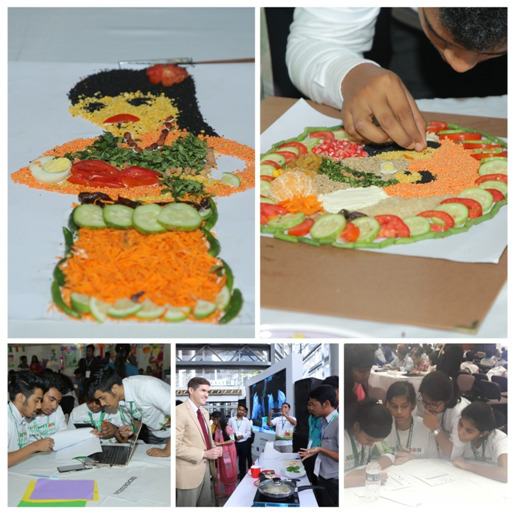
At the grand closing ceremony, winners of the various games were chosen from different organizations. BIID Foundation CEO,Md Shahid Uddin Akbar gave a speech which signified the advancements in technologies that BIID has worked on which greatly proved beneficial and is developing still to be the best and also mentioned the integration of new ICT tools including mobile based solution and social media. He also expressed his gratification in successfully conducting this huge event with the cooperation of the collaborating organizations and with the keen support of the members and officials of BIID and also by the enthusiasm of the energetic youth participants. Hon’ble State Minister of Information and Communication Technology Division,Zunaid Ahmed Palak also delivered a convincing, motivating discourse promulgating healthy food and in proper amount.Next addressed Hon’ble Minister of MoHFW Zahid Malek and Md. Ashadul Islam, Secretary of Health Services Division, MoHFW and Qamrul Islam, MP, Hon’ble Minister, Ministry of Food. Magician Jewel Aich also delivered a few remarks.Then winners of the best stall, best nutrition club, action tree etc were awarded too. The winners chosen are- Street Play:MowlanaBhashani Science & Technology University; Diet Chart: Group A: Imam Gazzali Girls School & College, Group B: College of Home Economics; Open Internet Challenge: Maple Leaf International School; Food Design: MowlanaBhashani Science & Technology University; Best Nutrition Club: Imam Gazzali Girls School & College; Most Innovative Nutrition Club: College of home economics; Mini Essay: Group A-Imam Gazzali Girls School and College, Group B-Maple Leaf International School, Group C- ULAB; Best Mentor:AbdulRaquib, Senior Science Teacher at Maple Leaf International School and a few more.
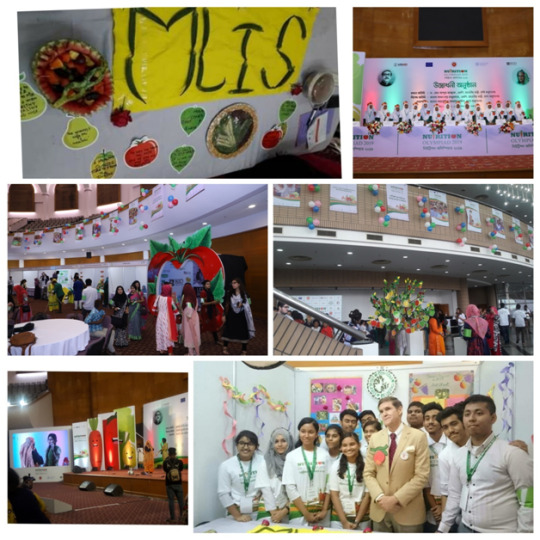
The grand event came to an end smoothly. In the last few minutes, winners and participants clicked pictures on the stage with the honorable guests. Such was the extravaganza and we hope the next Nutrition Olympiad is held just as marvelously or perhaps more grandly.
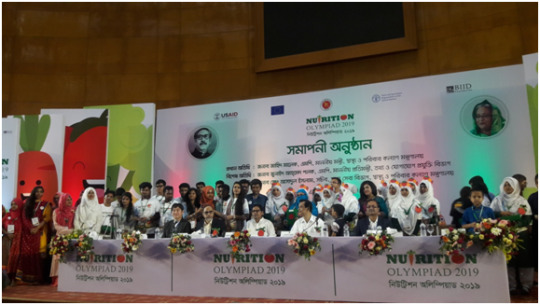
Closing ceremony; respected guests with the winners
1 note
·
View note
Link
Kathryn’s interview from CRACK International Art Camp 2017, shot in Kushtia, Bangladesh by Deshantor TV.
This is a interview Kathryn Hummel She is came from Australia and join with Crack International Art Camp in Kushtia Dhaka Bangladesh. Kathryn Hummel is a poet and she want to explore her knowledge for that she realize this art camp. She is very excited for this event. Kathryn get some message for her own country Australia people who want to explore the event of crack art camp in Bangladesh. Kathryn told in this video i am very happy with this crack art camp and she want to say all people about this events
1 note
·
View note
Text
Shishir Local SEO Experts
Address: 2182 Goosetown Drive Mars Hill,NC,28754
Phone: 828-689-0290
The US address provided on this page was randomly generated. All these generated addresses cover all cities and states in the United States. You can specify a state, city or zip code to generate a specific address. Please note that although these randomly-generated addresses have the correct format, they are not real. They are only generated according to the correct and complete address format. You can enter these address information in some insecure websites to protect your real information
1 note
·
View note
Photo

I want to live in a time where I don't have to worry about anything. Neither yesterday, nor today, nor tomorrow🌸🍁 (at Kushtia City) https://www.instagram.com/p/CZ1q0mgv4deJudOiJlvhemnZ2okVnemBimROUg0/?utm_medium=tumblr
1 note
·
View note
Text
Iris Publishers-Journal of Archives of Pharmacy & Pharmacology Research-Do Folk Medicinal Practices of Bangladesh Have any Scientific Value? an Appraisal of Phytotherapeutic Practices of a Rural Folk Medicinal Practitioner
Read More: Full Text
For More articles in
Archives of Pharmacy & Pharmacology Research
For more open access journals in Iris Publishers

Abstract
Folk medicine is generally considered as phytotherapy practiced by an individual or a group of individuals, who do not need to obtain any institutional training or approval to practice, and who can practice on a regular basis or as a hobby. In Bangladesh, folk medicinal practitioners (FMPs) are a varied lot using a bewildering variety of plants to treat almost every ailment suffered by human beings. It is the general opinion of allopathic doctors and the affluent section of the Bangladeshi population that FMPs practice nothing but quackery and their main objective is to deceive people. It was the objective of the present study to document the phytotherapeutic practices of a village FMP of Bangladesh and to search through the scientific literature to determine whether the plants used by the FMP had any scientific validation behind their uses. Our Results and Discussions clearly demonstrate that folk medicinal plants have substantial scientific validations, which possibly has come through practice of folk medicine and honing of such practices over thousands of years and transmission of acquired knowledge to successive generations initially orally and then through written methods.
Keywords: Folk medicine; Scientific validation; Phytotherapy; Kushtia; Bangladesh
Introduction
Folk medicine (FM) is practiced by part-time or full-time folk medicinal practitioners (FMPs) in Bangladesh, utilizing for the most part plant-based remedies as their modus operandi for treatment of practically all ailments suffered by the Bangladesh people. FM is not unique to Bangladesh; it is present in practically every country of the world under different names or guises like home remedies, herbal remedies, etc. With time, FM can even take on a more formal form in which cases they are known as Ayurveda and Siddha (in India), Unani (in Greece) or Kampo (in Japan). People of Thailand are said to use herbal remedies since the Sukothai period (1238- 1377) [1]. However, the use of plants as medicines dates back to much earlier times. Radiocarbon dating shows that plants were cultivated in ancient Babylon (present Iraq) more than 60,000 years ago [2]. It is possibly safe to say that human beings have suffered from ailments since their very advent and have tried to cure such ailments possibly from the earliest human ancestors about 6-7 million years ago – the Australopithecines [3]. It is to be taken into account that the great apes and other animal species instinctively partake of some plants for medicinal purposes [4], and the earliest hominids could have easily caught onto this ‘cure’ system.
Ethnomedicine is still somewhat a new concept in Bangladesh even though the country possibly has more than a hundred tribes and over 5500 plant species. With the emergence of new diseases, drug-resistant vectors, and adverse effects of allopathic medicines, even modern doctors and scientists are giving FM a second look. There is a desperate need for new drugs to treat diseases like malaria and antibiotic-resistant microorganisms; plant kingdom, which has always been a source for new drugs [5], can also be the sources for novel drugs at present and in the future. In this instance, FMs can play a key role in guiding scientists to plants with strong potential as sources of novel and efficacious drugs, for from constant practice they can be the most knowledgeable persons on therapeutic properties of plants. Another possible advantage of FMs and tribal medicinal practitioners (TMPs, really tribal FMs) is that due to regional diversity or simply knowledge-based diversity, there can be huge variations between the selections of plants to treat the same disease from one FM to another, even though both FMs may be practicing quite close to one another [6-35]. This opens up alternate sources of discovering possible new drugs with less or no adverse effects. FM is generally dismissed by the allopathic doctors and the affluent section of the population as ‘quackery’. Our objective was to select at random a FMP, and see whether the FMP’s therapeutic uses of plants are supported by available scientific reports on the pharmacological activities of the plant and reported phytochemicals in the plant with appropriate therapeutic benefits. As such we chose a rural FMP for such FMPs, if any, may be more prone to such ‘quackery’.
Methods
The FMP was named Shahidul Islam, male, middle-aged, that is around 45 years of age. He practiced in the villages of Daulatpur Upazila (sub-district) in Kushtia district, Bangladesh. The subdistrict had a total number of 246 villages with an area of 468.76 square kilometer and a population density of 946 per square kilometer. Kushtia district is located in between 23°42’ and 24°12’ north latitudes and in between 88°42’ and 89°22’ east longitudes with an area of 1621.15 sq km. The practice of the FMP was to travel in the various villages searching for prospective patients and also practicing from home at Gobrapara village, Kushtia district. Prior informed consent was initially obtained from the FMP. The FMP was informed the reason for our visit and consent obtained to disseminate any information provided including his name both nationally and internationally. Actual interviews were conducted in the Bengali language, which was spoken fluently by the FMP as well as the interviewers, the language being the mother tongue of FMP, villagers and the interviewers. The interviews were conducted with the help of a semi-structured questionnaire and the guided field-walk method of Martin [36] and Maundu [37]. In this method the FMP took the interviewers to spots from where he collected medicinal plants for therapeutic purposes. (In Bangladesh every village will have fallow land, secluded spots, small water bodies, or a strip of forest from where FMPs and folk herbalists collect their medicinal plants.) The FMP showed the interviewers a number of plants and described their therapeutic uses. All plant specimens shown by him were collected on the spot, pressed, dried and brought back to Dhaka for identification by a competent botanist. Voucher specimens were deposited with the Medicinal Plant Collection Wing of the University of Development Alternative. Secondary information on the pharmacological properties and phytochemicals of the plants used by the FMP were obtained from papers in PubMed, SCOPUS and Google Scholar abstracted journals.
Results and Discussion
The FMP used a total of twelve plants in monoherbal and polyherbal formulations to treat fever, loss of appetite, rheumatism, snake bite, female hormonal disorders, gastritis, anemia, neck pain, nerve sprain, sleep paralysis, ear infection and as a galactagogue. The results are shown in Table 1. Female hormonal disorders are taken in rural Bangladesh to mean either infertility or menstrual problems. Nerve sprain is pain in any portion of the body due to sudden twisting of that body part; in most cases, it indicates neck pain caused from not using proper support for the head and neck during sleeping. Sleep paralysis is inability to speak or move after waking up or while falling asleep; it can be temporary or last longer if it happens from extreme fear, which in rural areas happens when a person imagines to have seen something evil from the spirit world in dream or while waking up suddenly during sleeping. Andrographis paniculata was used by the FMP to treat fever and loss of appetite. The latter can be an individual problem or arising out from fever. The plant contains the anti-pyretic compound, andrographolide, which has been shown to reduce fever in Brewer’s yeast induced pyrexia in rats [38]. Improvement of appetite has been seen with infective hepatitis patients following treatment with the plant [39]. Lasia spinosa and Zingiber officinale have been reported to possess analgesic and anti-inflammatory properties [40,41]; the reports validate the use of the FMP of these two plants to treat rheumatism. The leaves of Carica papaya have lactagogue effect [42]; the FMP used the fruits of the plant (Table 1).
Table 1: Medicinal plants and formulations of the FMP from Kushtia district, Bangladesh.
Crataeva religiosa has medicinal uses in traditional medicinal system of India to treat snake bite [43]. Commelina benghalensis is used to treat infertility in women in many parts of tropical Asia [44]. The fruits of black pepper can be beneficial during gastritis; the fruits also stimulate digestive enzymes, which in turn can lead to amelioration of anemia by stimulating more food consumption; the active ingredient is known to be piperine [45]. Mature fresh leaves of Vitex negundo have analgesic and anti-inflammatory properties [46], so the leaves can be used for neck pain or sprain. The same applies to Cissus quadrangularis, Paederia foetida and Datura metel [47-49]. Thus the three plants in combination can be useful against neck pain and nerve sprain. However, their effectiveness against sleep paralysis needs to be scientifically determined. The analgesic and anti-inflammatory properties of C. quadrangularis can also make it an effective plant to be used against any pain and inflammation associated with ear infection. Overall, it can be seen from published scientific reports that the various plants used by the FMP are more or less scientifically validated in their therapeutic uses based on their reported pharmacological activities and phytochemical contents. FMPs and FM cannot then be describes as mere ‘quackery’, although there may be isolated cases of fraudulent practices.
Conclusion
Our findings suggest that the phytotherapeutic methods of the present FMP were quite consistent with available scientific reports on the pharmacological properties and phytochemical contents of the plants used by the FMP. As such, folk medicine can form the basis for herbal cures and the plants used in folk medicine can prove to be valuable sources of new drugs.
Read More: Full Text
For More articles in Archives of Pharmacy & Pharmacology Research
For more open access journals in Iris Publishers
1 note
·
View note
Text
Featured Post: Whispers & Wailings by Khan Mosleh

About Whispers & Wailings: The book Whispers and Wailings is based on eight years of research. The author, Prof. Khan Mosleh, has lived and taught in various countries in the Middle East since January 1, 2012. In this long journey, he has come into contact with thousands of Bangladeshi immigrant workers and heard from them the tragic history of their lives. Although the workers are termed 'remittance fighters,' they are neglected by their own country. In the Middle East, they are called 'Miskin.' These heroic workers sacrifice their happiness for 12 to 14 hours a day and 7 days a week and to bring smiles to the faces of their country and family. Targeted Age Group: 18-75 Written by: Khan Mosleh Buy the ebook: Buy the Book On Amazon Author Bio: Prof. Khan Mosleh was born and raised in Kushtia, Bangladesh. His primary and secondary education began in Kushtia; upon completion, he left Kushtia and studied Applied Physics Electronics at Dhaka University is often called the Oxford of the East.In March 1982, he came to the United States of America in my pursuit of higher education. Professor Mosleh is currently teaching for the University of Maryland Global campus in its European division, primarily in the Middle-east region. During the last eight years, he had done extensive research on the condition of third-world country nationals (TCN) working in the Middle east. Their sub-standard living conditions and inhuman treatment by their employer. They are the victims of modern-day slavery. Prof. Mosleh interviewed about a thousand TCNs in the last eight years about their living conditions, pay rates, working conditions, mistreatment abusiveness at work, CTIP (combating trafficking in person), and their family background. The book WHISPERS and WAILING is based on these unfortunate migrant workers. He wrote and published the Bengali version of this book, SONAR HORINER KHONJE in Bangladesh. His first published book, ATTMOPROKASH, became the #3 best-selling list in Bangladesh. The author also translated The Kite Runner by Khaled Hosseini in the Bengali language. Read the full article
0 notes
Video
instagram
For full videos subscribe our YouTube channel @faysal coffee ART !! Link !! https://youtube.com/channel/UC6PSgFDizuh7dYjNLOfvlkA !! Our channel only for about coffee art and learning how to make coffee and get how to be a professional barista.We work hard to make videos just to entertain you.if u are new pls flow up our Instagram and subscribe our YouTube channel !! Faysal coffee ART !! Like, comment and share.#baristatraining #bahrain #bahrainnationalday #bahraininstagram #bangladesh #india #oman #instagram #facebook #tiktok #artistsoninstagram #latte #usahawancuckoo #turky #uk #dubai #kushtia #baristaskills #foodphotography #eat #lovequotes #youtube #youtuber #youtubers #fans #salmankhan #star #baristaart#bahrainfoodies https://www.instagram.com/p/CRKL7dxHlo4/?utm_medium=tumblr
#baristatraining#bahrain#bahrainnationalday#bahraininstagram#bangladesh#india#oman#instagram#facebook#tiktok#artistsoninstagram#latte#usahawancuckoo#turky#uk#dubai#kushtia#baristaskills#foodphotography#eat#lovequotes#youtube#youtuber#youtubers#fans#salmankhan#star#baristaart#bahrainfoodies
1 note
·
View note
Text
Ramadan Calendar 2021 For Kushtia (কুষ্টিয়া) Sehri & Iftar Time
Ramadan Calendar 2021 For Kushtia (কুষ্টিয়া) Sehri & Iftar Time
Ramadan Calendar 2021 is available here. Happy Ramadan to all. Ramadan is the holiest month in the Muslim world. Ramadan is the month of abstinence. It is a month of many pursuits for the Muslim community. The fast begins in the morning and ends in the evening iftar. The joy of fasting is in Iftar, although there are many more gifts for fasting. Keeping the body fresh by fasting for about 15…

View On WordPress
0 notes